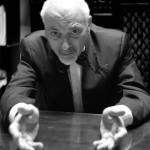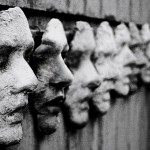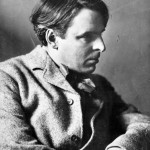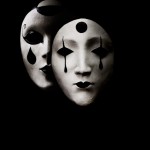Over the last few months, I’ve been trying to find evidence to prove that Yeats’s idea of the self and its anti-self (the mask or Daimon) bears strong relation to Pirandello’s interpretation of the distinction between the so called persona and personaggio, and this analogy is most evident in their dramas.
When Yeats writes to Olivia Shakespear about the effect of his beard on his friends, he implicitly alludes to his idea of the mask, and this is why he mentions Pirandello as well: “[I]f Pirandello is right, my friends, taking their impulse from my appearance, […] will connect me with something reckless and dashing [the anti-self].” This passage, in fact, suggests that in a human being there live more than one selves—an idea which both Pirandello and Yeats were obsessed with. Yeats was continuously haunted by images, and as a result, he gradually elaborated his own concept of the splitting of the self (i.e. the distinction between self and anti-self [the mask] which coexist in certain chosen human beings). Pirandello and his ideas on the so called personaggio made a lasting impact on Yeats’s elaboration of the splitting of the self, and deepened his ideas on the mask, especially after Yeats had seen an excellent performance of Pirandello’s Henry IV in the Abbey Theatre in 1923.
The basis of the connection between their concepts lies in the fact that both the Pirandellian persona and the Yeatsian self are subject to their counterparts, that is, the personaggio and the anti-self. As in the centre of Pirandello’s theatre stands the personaggio, in a similar vein, in the centre of Yeats’s drama, we find the anti-self. What is striking in both cases is that the anti-self and the personaggio constitute an extraordinary and exceptional part of a person’s ordinary self, as both are strongly related to one’s artistic personality, since they are “the artist’s own creation”, as Richard Ellmann articulates it. Also, persona and personaggio as well as the Yeatsian self and anti-self are antithetical poles, but these poles are integrated into one another and cannot exist alone in our personality. Moreover, as Nicholas Meihuizen points out, “the Daimon [anti-self] comes not as like to like but seeking its own opposite, for man and Daimon feed the hunger in one another’s hearts”. This doubling of the self is most evident in the distinction between one’s everyday nature and one’s art. And it is this splitting of the self that differentiates, for instance, the six characters from the actors and the Stage Manager in Pirandello’s Six Characters in Search of an Author, or Decima from the whole dramatis personae of Yeats’s The Player Queen.
Should you be interested in this topic, you can read about the findings of my research in the following posts in which I intend to show you the most outstanding textual realizations of these concepts.





